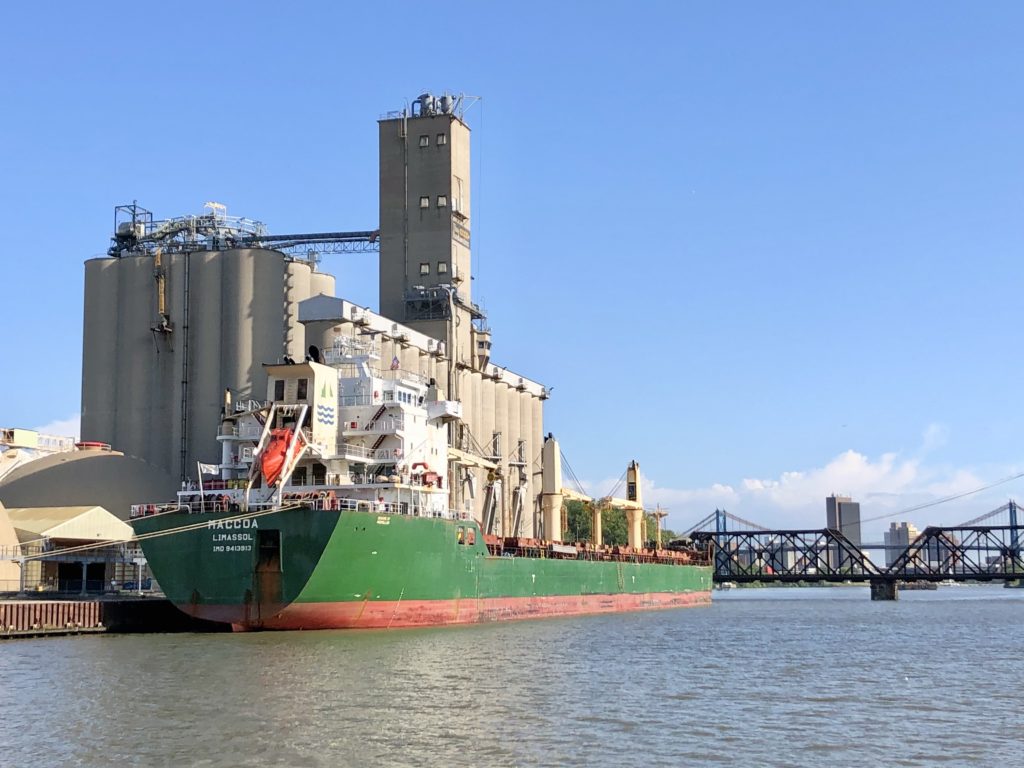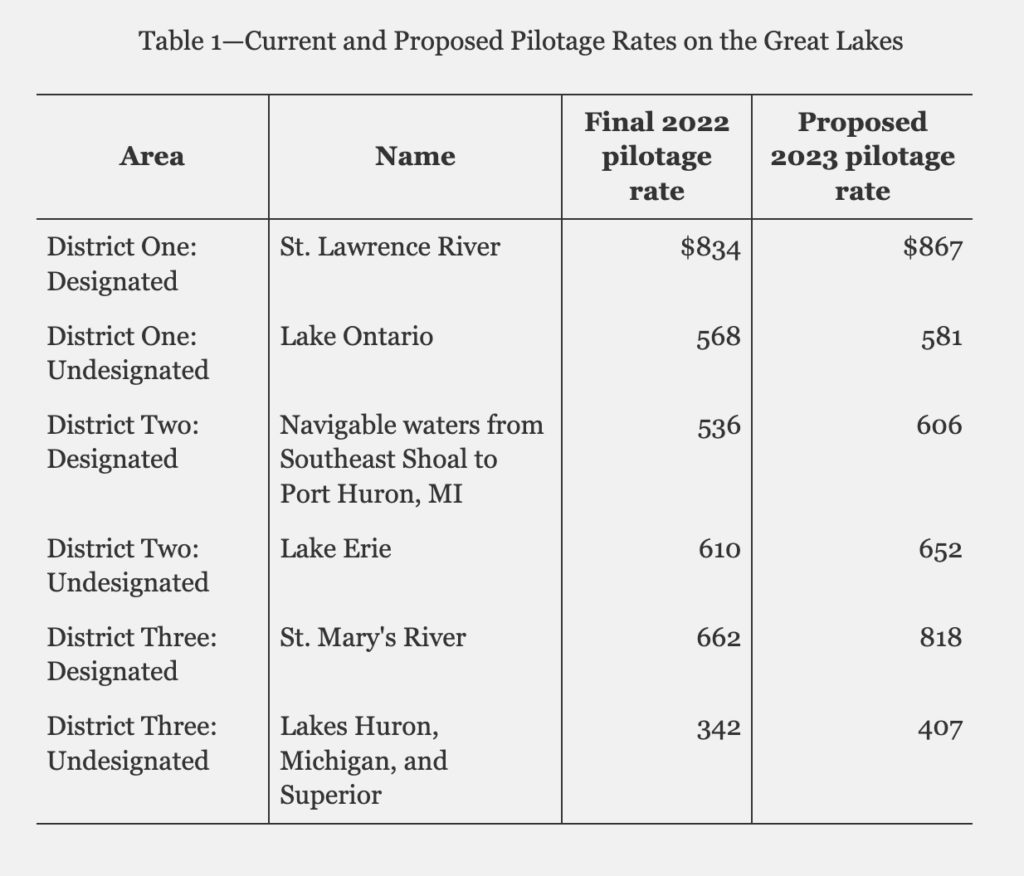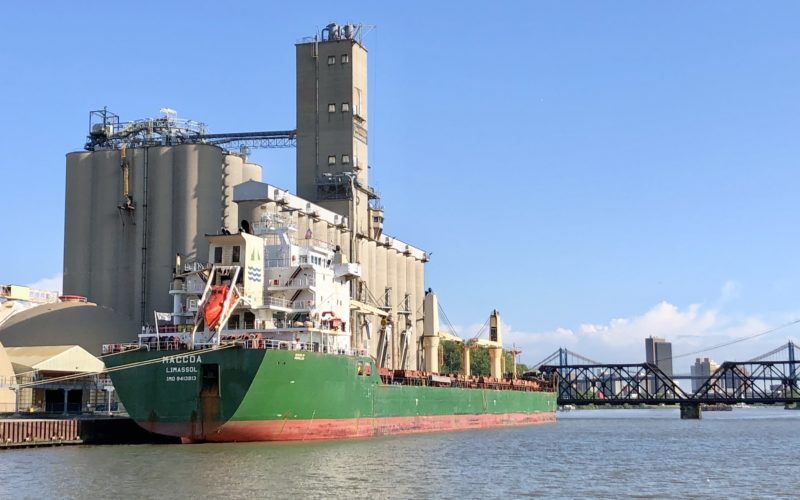
By Melissa Russell
The U.S. Coast Guard has proposed a 5.78 percent increase for Great Lakes pilotage rates for the 2023 shipping season.
The new rate structure would raise shipping costs by about $4.5 million over 2022, or about 14 percent, according to a Coast Guard estimate.
Shipping industry representatives expressed concern over the steady rise in rates over the past decade. They describe Great Lakes pilots “among the wealthiest two percent of Americans” whose pay eclipses that of nearly all other mariners, including captains of Great Lakes freighters.
The three Great Lakes pilotage groups are the St. Lawrence Seaway Pilots Association, the Lakes Pilots Association, and the Western Great Lakes Pilots Association. In a joint statement, they highlight the pay increase as a cost-of-living adjustment during a period of steep inflation.
The Coast Guard’s 2023 rate proposal contemplates 55 Great Lakes pilots in 2023 and seven apprentice pilots. That is a modest increase over the 2022 season when there were 51 pilots and nine apprentices. Those pilots would earn about $422,336 per pilot on average, which is about $23,000 more than 2022.
That salary range remains lower than many other U.S. pilotage groups, where salaries often exceed $500,000.
The Great Lakes Pilotage Act of 1960 gave the Coast Guard the authority to set rates for oceangoing vessels on the Great Lakes and St. Lawrence Seaway. The Lakes are divided into six districts including St. Lawrence River, Lake Ontario, navigable waters from Southeast Shoal to Port Huron, Michigan; Lake Erie, St. Mary’s River and Lakes Huron, Michigan and Superior.
Each district is divided into “designated” areas, where pilots must direct navigation at all times, and “undesignated” areas, which are open bodies where pilots must be on board and available to direct navigation. Pilotage rates in designated areas can be significantly higher than those in undesignated areas.
Foreign-flagged ships are required by law to employ pilots while transiting the Great Lakes. U.S. and Canada-flagged freighters that only transit in Great Lakes waters may also use pilots at various times but are not required by law to do so. Carriers that use the pilots pay for their services. That revenue covers operating expenses, pays salaries for registered pilots and apprentices, and helps maintain infrastructure, among other things.

Roughly 285 foreign-flagged ships transit the Great Lakes each year, the Coast Guard said. That estimate is down slightly from the projected 293 ships said to use the system during the 2022 rate-setting process.
Congress addressed pilot staffing on the Great Lakes with an overhaul of the ratemaking methodology starting in 2015. For 2023, the Coast Guard is proposing increases in hourly that vary based on where the service is provided. The service used an existing 10-step process for setting pilotage rates.
The American Great Lakes Ports Association, the Shipping Federation of Canada and the U.S. Great Lakes Shipping Association submitted joint comments to the Coast Guard raising concerns about the proposed rates.
“The cost keeps going up exponentially,” Steven Fisher, executive director of the American Great Lakes Ports Association told Professional Mariner. “There have been double digit percentage increases every year for most of the last eight years. The service has gotten very expensive.”
Broadly speaking, industry groups believe the Coast Guard has done a poor job of keeping the economic health of the shipping system in mind when setting costs. “If the cost of service makes shipping less competitive on the Great Lakes, everybody loses, including the pilots. The cost the shipowner pays for pilots, fuel, labor, and crew, anything the ship needs to operate, it all gets passed to the customer,” he said.
None of the three pilotage groups operating on the Great Lakes responded to an inquiry from Professional Mariner. However, their joint comment to the Coast Guard said industry groups have mischaracterized the proposal.
The three groups also urged the Coast Guard to consider adding more pilots to serve the Great Lakes. The joint statement said there were nine cruise ships on the Lakes in 2022 carrying 25 percent more passengers than 2019, the last full year before the Covid-19 pandemic. Those cruise vessels are adding to the workload of the existing pilots.
“Quite simply,” the pilots argued, “there are many more vessels and more pilots need to be authorized to move them.”
The Coast Guard will decide pilotage rates in the coming months. They will take effect for the 2023 shipping season, which will begin around April 1. The Coast Guard declined to comment on the proposal.

